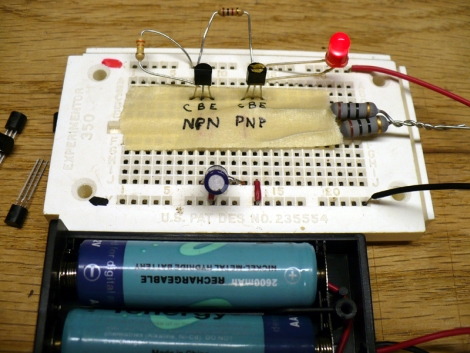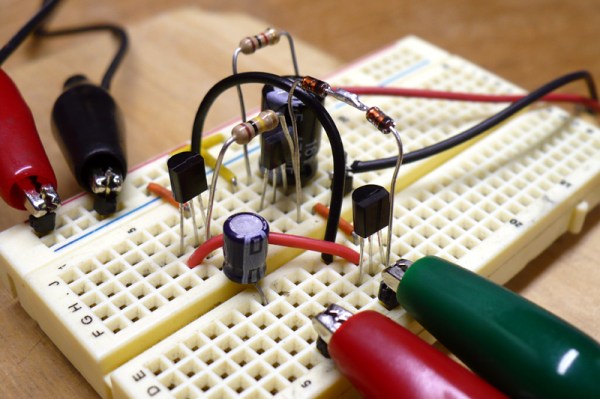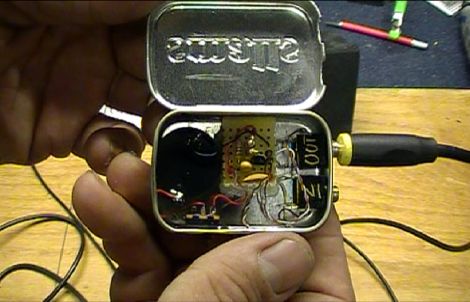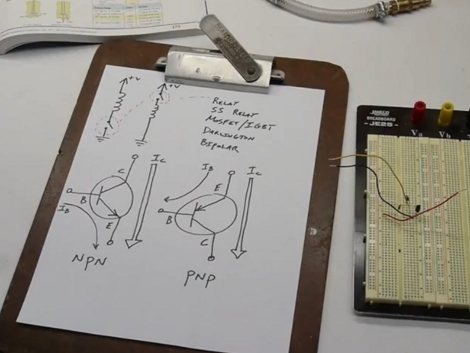
Hacker [Dino Segovis] is back with yet another installment of his Hack a Week series, and it’s looking like he isn’t too worse for wear after hunkering down to face hurricane Irene.
This week, it seems that [Dino] is having some problems separating his PNP transistors from his NPNs. After Albert Einstein proves to be less than useful when it comes to sorting electronic components, [Dino] decided to build a simple transistor tester to help him tell his PNPs and NPNs apart without having to resort to looking up product data sheets.
The tester itself is relatively simple to build. As you can see in the video below, it consists of a power supply, an LED, a few resistors, a pair of known transistors, and not much else. When everything is hooked together, the NPN/PNP pair causes the LED to light up, but the circuit is broken whenever one of the transistors is removed. Inserting a new transistor into the empty spot on the breadboard immediately lets you know which sort of transistor you have inserted.
Sure you can tell transistors apart with a multimeter, but if you have a whole drawer full of loose components, this is a far more efficient option.
Continue reading “Simple Transistor Tester Makes Sorting Easy”
















